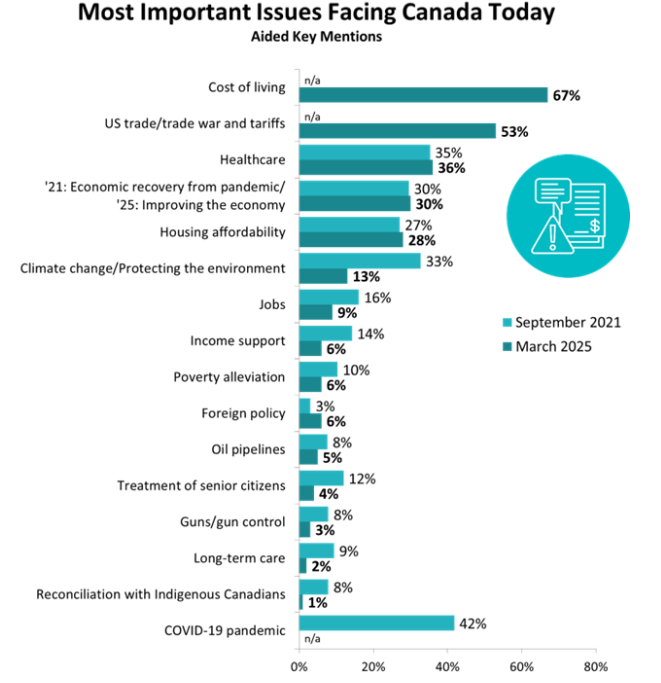Article content

Welcome to the Campaign Dispatch, where every day the Financial Post will give you the lowdown on what’s trending on the economic side of the federal election, as well as offering some insight into what the what the candidates are planning and what our reporters are monitoring.
The 2025 federal election kicked off on Sunday when Liberal leader Mark Carney called a snap election set for April 28, calling it the “most consequential election of our lifetimes.”
Article content
The major issues hanging over this election will undoubtedly be state of the economy, the trade war with the United States and, of course, how to handle U.S. President Donald Trump.
A recent poll from Narrative Research shows the cost of living (67 per cent) and the trade war (53 per cent) are the most pressing issues facing Canadians in this election.
Meanwhile, economic recovery from COVID-19 (30 per cent) and housing affordability (28 per cent) also ranked highly on the list.
This comes as a stark contrast to the 2021 election, when COVID-19 (42 per cent), healthcare (36 per cent) and climate change (33 per cent) were the top three issues, according to the survey.

Cost of living also topped the charts in a poll from Abacus Data, where 45 per cent of respondents pegged it as one of their two top most pressing issues, followed by dealing with Trump (33 per cent), and healthcare (20 per cent).
Making Canada more affordable and growing the economy rounded out the top five, with 19 per cent and 17 per cent of respondents, respectively.
With tariffs swiftly emerging as the focus of this election — and with Canadians facing more tariffs to come next week — Canada’s election candidates have different ideas on how best to handle them.
Article content
Liberal Leader Mark Carney has pledged to keep any existing tariffs in place until “the Americans show us respect,” though he has signalled that Canada is limited in fighting further tariffs due to the economic size difference between the two nations.
Conservative Leader Pierre Poilievre has suggested matching dollar-for-dollar the U.S.’s 50 per cent tariffs on Canadian steel and aluminum, but has so far focused on eliminating provincial trade barriers to fight back.
Poilievre’s plan includes convening Canada’s premiers to remove as many trade barriers as possible and offering financial incentives for each trade barrier they remove.
NDP Leader Jagmeet Singh said Canada should focus on using its own steel and aluminum for infrastructure projects, but has so far focused his attention on workers, pledging improved employment insurance and prioritizing Canadian companies for infrastructure projects.
One recent poll from the Angus Reid Institute suggested Carney has an early edge, finding Canadians believe he is best equipped to handle a trade war with the U.S., protecting the Canadian economy and expanding trade relationships beyond the U.S.
Share this article in your social network
